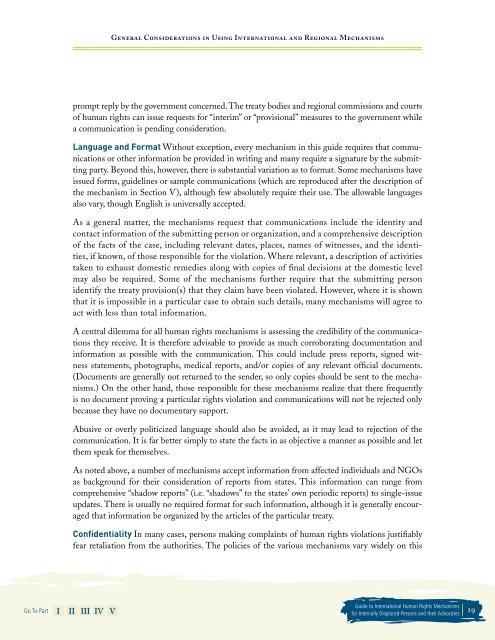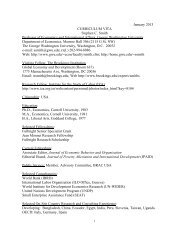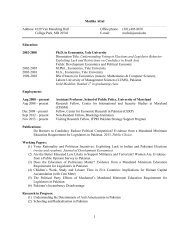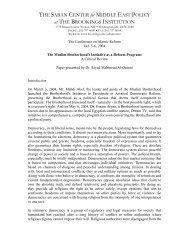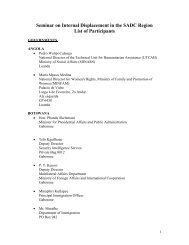Guide to International Human Rights Mechanisms - Brookings
Guide to International Human Rights Mechanisms - Brookings
Guide to International Human Rights Mechanisms - Brookings
Create successful ePaper yourself
Turn your PDF publications into a flip-book with our unique Google optimized e-Paper software.
Go To Part I II III IV V<br />
General Considerations in Using <strong>International</strong> and Regional <strong>Mechanisms</strong><br />
prompt reply by the government concerned. The treaty bodies and regional commissions and courts<br />
of human rights can issue requests for “interim” or “provisional” measures <strong>to</strong> the government while<br />
a communication is pending consideration.<br />
language and format Without exception, every mechanism in this guide requires that communications<br />
or other information be provided in writing and many require a signature by the submitting<br />
party. Beyond this, however, there is substantial variation as <strong>to</strong> format. Some mechanisms have<br />
issued forms, guidelines or sample communications (which are reproduced after the description of<br />
the mechanism in Section V), although few absolutely require their use. The allowable languages<br />
also vary, though English is universally accepted.<br />
As a general matter, the mechanisms request that communications include the identity and<br />
contact information of the submitting person or organization, and a comprehensive description<br />
of the facts of the case, including relevant dates, places, names of witnesses, and the identities,<br />
if known, of those responsible for the violation. Where relevant, a description of activities<br />
taken <strong>to</strong> exhaust domestic remedies along with copies of final decisions at the domestic level<br />
may also be required. Some of the mechanisms further require that the submitting person<br />
identify the treaty provision(s) that they claim have been violated. However, where it is shown<br />
that it is impossible in a particular case <strong>to</strong> obtain such details, many mechanisms will agree <strong>to</strong><br />
act with less than <strong>to</strong>tal information.<br />
A central dilemma for all human rights mechanisms is assessing the credibility of the communications<br />
they receive. It is therefore advisable <strong>to</strong> provide as much corroborating documentation and<br />
information as possible with the communication. This could include press reports, signed witness<br />
statements, pho<strong>to</strong>graphs, medical reports, and/or copies of any relevant official documents.<br />
(Documents are generally not returned <strong>to</strong> the sender, so only copies should be sent <strong>to</strong> the mechanisms.)<br />
On the other hand, those responsible for these mechanisms realize that there frequently<br />
is no document proving a particular rights violation and communications will not be rejected only<br />
because they have no documentary support.<br />
Abusive or overly politicized language should also be avoided, as it may lead <strong>to</strong> rejection of the<br />
communication. It is far better simply <strong>to</strong> state the facts in as objective a manner as possible and let<br />
them speak for themselves.<br />
As noted above, a number of mechanisms accept information from affected individuals and NGOs<br />
as background for their consideration of reports from states. This information can range from<br />
comprehensive “shadow reports” (i.e. “shadows” <strong>to</strong> the states’ own periodic reports) <strong>to</strong> single-issue<br />
updates. There is usually no required format for such information, although it is generally encouraged<br />
that information be organized by the articles of the particular treaty.<br />
confidentiality In many cases, persons making complaints of human rights violations justifiably<br />
fear retaliation from the authorities. The policies of the various mechanisms vary widely on this<br />
<strong>Guide</strong> <strong>to</strong> <strong>International</strong> <strong>Human</strong> <strong>Rights</strong> <strong>Mechanisms</strong><br />
for Internally Displaced Persons and their Advocates 1


